The dog breeds from Great Britain.
All these British dog breeds on this page had their origins in Great Britain. That means the countries of England, Wales and Scotland. By definition, Ireland is excluded, so no Irish Wolfhounds here! But you can read my page about the Irish Wolfhound here.
Most of these British Dog Breeds were developed as working dogs of one sort or another. Some of them represent some unique aspect of British life, such as the Bull Mastiff, bred by gamekeepers by crossing a bull dog with a mastiff, to produce a calm yet powerful dog, capable of catching and restraining poachers.
British Dog Breeds – the list
So here’s the list of popular dog breeds that were originally bred in Great Britain.
Airedale Terrier
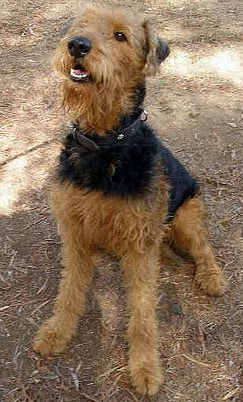
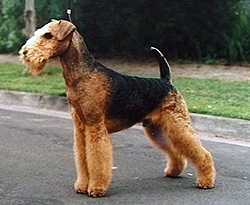
The “King of Terriers”, the Airedale was bred in the Aire Valley district of Yorkshire in England, to detect and flush out vermin such as rats. They are the largest of the terrier breeds. They are docile and complacent with kids, but with a stubborn streak when chasing something.
They also hunted otters, weasels, martens and foxes. Farmers needed a dog small enough to get into the animal’s lair, but strong enough to take on something as big as a fox. They were originally bred by combing the now-extinct Black-and-Tan terrier with the Bull Terrier, and then adding some Otterhound.
Beagle
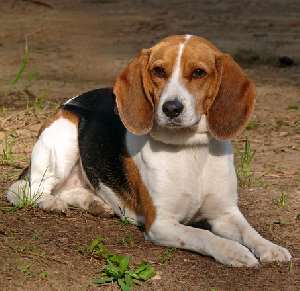
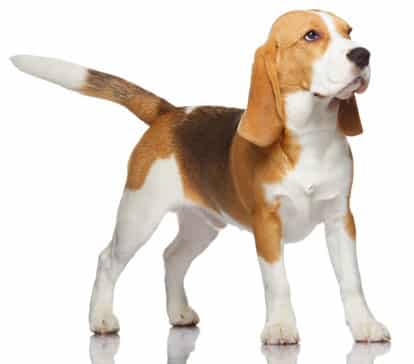
The Beagle is a scent hound, detecting its target by scent alone. They were bred as hunting dogs, to identify and flush out game.
They have their roots in England in the 1500’s, when Queen Elizabeth I started a fad by keeping Pocket Beagles. These dogs were too small to be used in fox hunting, and the Foxhound was preferred at the time.
However the modern Beagle first appeared around 1800 when they were specifically bred for hunting rabbits. They are now friendly, affectionate family dogs, which do well in the company of other dogs.
Bearded Collie

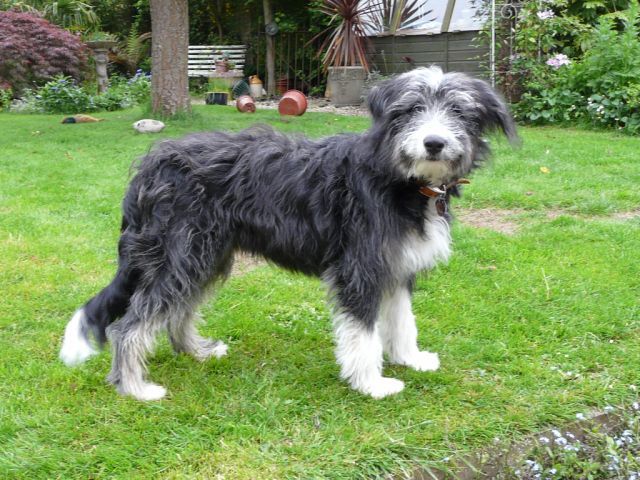
A friendly, exuberant and energetic breed, originally from Scotland. Bred to herd cattle and help drive them to market when required. This dog seems to be impervious to rain, sleet and snow, and is ready to play and romp around at a second’s notice.
Bearded Collies are friendly and sociable, and love being in a family. They make great family dogs, but must be socialized and trained early, to prevent excessive jumping.
Bedlington Terrier

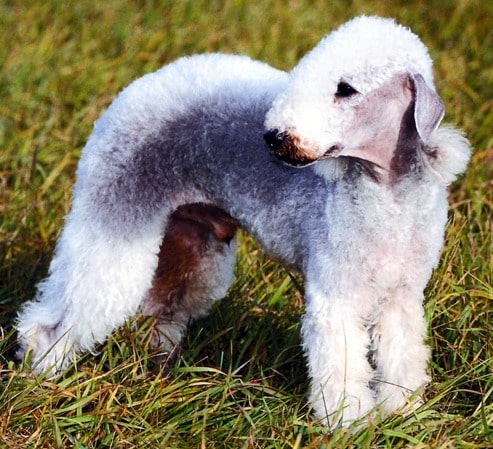
Bedlington Terrier
Don’t be deceived by this Terrier. They have a fragile lamb-like appearance – BUT underneath those cute little curls is a hardy little dog which has feistiness and affection in equal measures!
The Bedlington Terrier enjoys being part of a household and absolutely adores being the centre of attention. Although loyal and loving to all, he tends to choose one member of the family to bond closest with, and may well spend all his time following them around like Mary’s little lamb in the nursery rhyme!
Border Collie

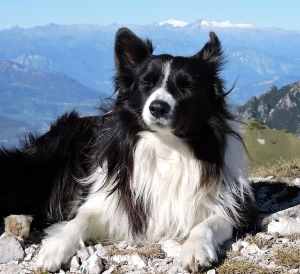
The Border Collie was developed in the border area between England and Scotland, in the English county of Northumberland to work with sheep. They were bred for generations to herd sheep, and are now the best sheep herders in the world.
They are very smart and accept training well – in fact training is essential to keep the dog’s mind occupied. Probably the most intelligent of British dog breeds.
Border Terrier

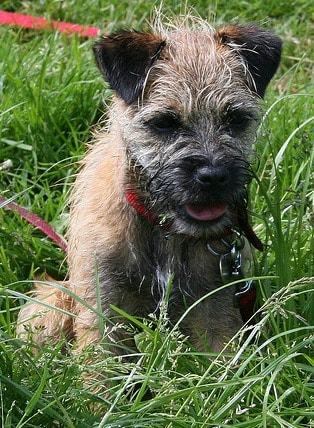
The Border terrier is often described as independent, courageous, persistent, agile and intelligent. They are friendly dogs and will greet every visitor by jumping up on them to lick and welcome them into the house.
They are frequent, loud barkers and may howl and sing several times a day so are possibly not the best dog to have if you have close neighbors!
Bullmastiff
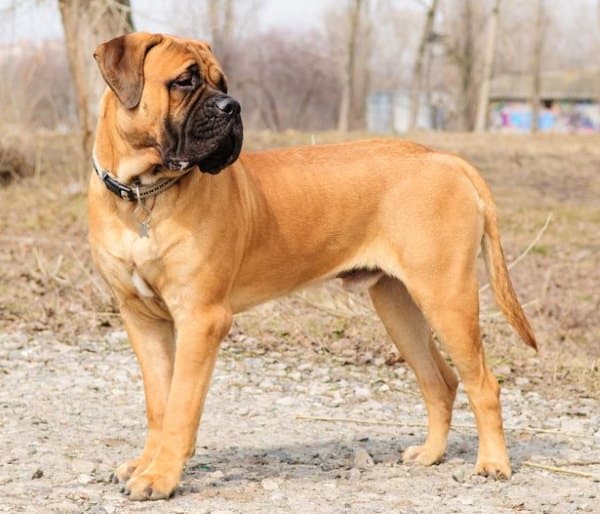
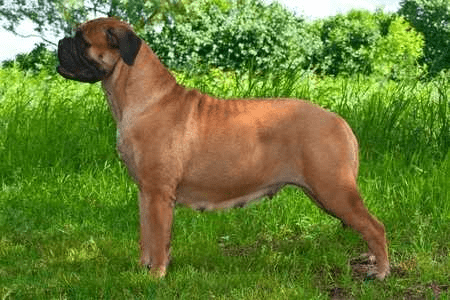
A large dog, the Bullmastiff was bred by English gamekeepers to help catch poachers of game (such as deer, fish and birds) on English country estates. Originally bred by crossing bulldogs with the big English mastiff, the resulting Bullmastiff is a large, heavy, powerful dog which combines strength with calmness and confidence.
These dogs were bred and trained to be very quiet; they rarely bark. The ideal Bullmastiff would detect a poacher, then quietly and calmly sneak up, and seize the poacher by the arm, then sitting down and holding the poacher firmly until the game keeper arrived to make the arrest
Cairn Terrier
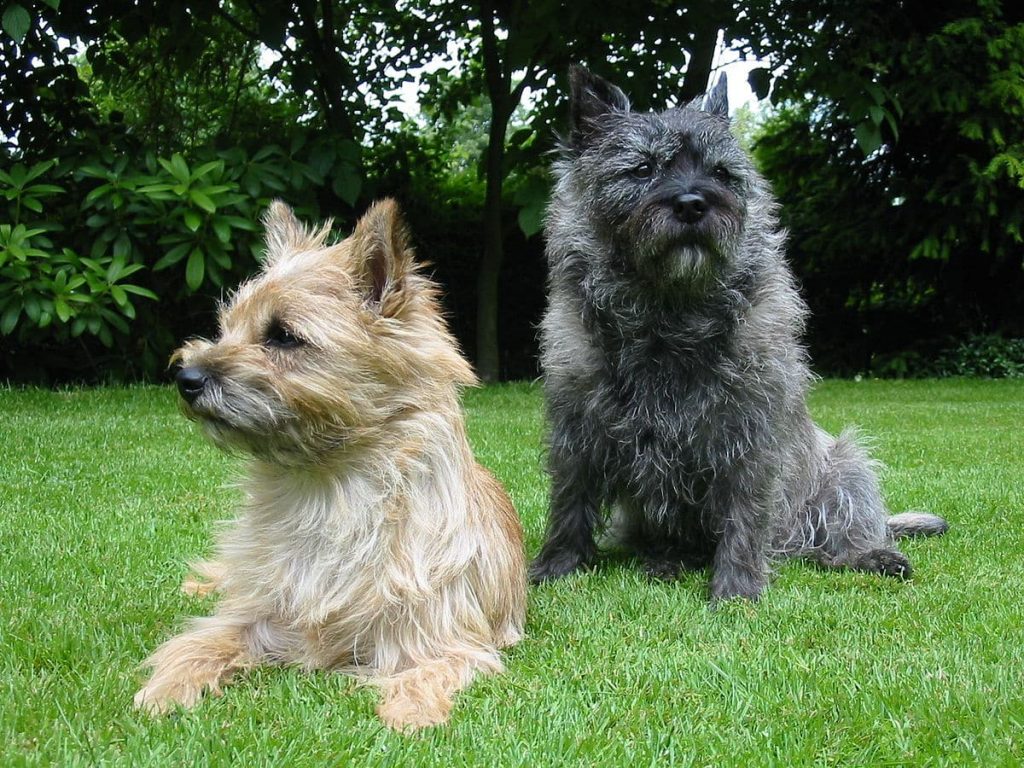
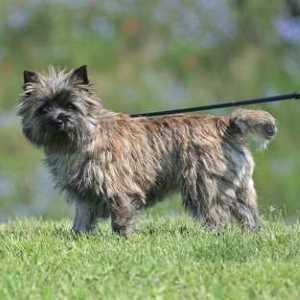
Originating in Scotland, this breed was developed to scent and dig out rodents under and around cairns – stone piles that mark out burial mounds, trail way points or land borders.
Small enough to be a lapdog but strong and brave enough to play outdoors in all weathers, the ‘Cairn’ is a great apartment dog, and sheds hair minimally, as long as you brush them regularly!
Cavalier King Charles Spaniel
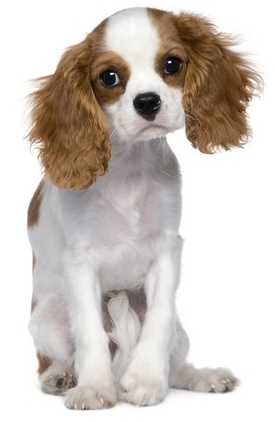

The Cavalier King Charles is “the King of Spaniels”. Small, sweet and gentle, they are small enough to not threaten kids, yet large enough to play with older kids. Overall, a calm dog breed.
The breed has its roots in Asia, but was first introduced to English King Charles in the 17th century, and was named thereafter. The King was very fond of this breed, but it didn’t take it’s modern form until after 1930. It was only recognized by the AKC in 1995.
Clumber Spaniel
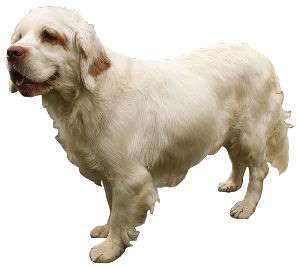
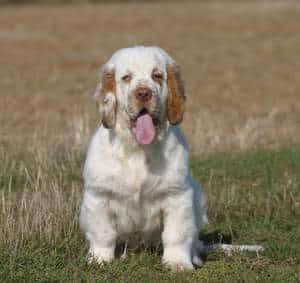
This breed gets its name from the Duke of Newcastle’s English estate at Clumber Park in Nottinghamshire. Brought to Clumber Park by the French Duc de Noailles, who was feeling threatened by the French Revolution, the breed was perfected here.
They were bred as hunting dogs for their ability to detect and retrieve shot game. They have a very keen sense of smell, even amongst dogs. They are slow-moving and calm, with modern dogs being something of a couch potato! It is one of the few gun dogs that can do well in an apartment. The Clumber spaniel is a relatively rare breed.
Dandie Dinmont Terrier


This is now one of the rarest of the British dog breeds. It originated in the Scottish border area, principally to hunt otters, but could also deal with badgers. It’s name comes from a fictional character in a book by Sir Walter Scott, called Dandie Dinmont.
The character was based on a real-life farmer and terrier breeder, James Davidson, who is generally credited with keeping the first accurate breeding records of this hardy terrier.
English Bull Terrier

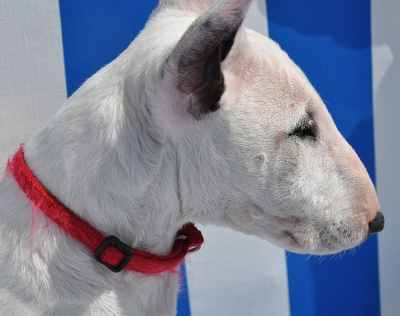
An instantly recognizable breed, the English Bull Terrier is usually white, with a oval shaped head and small eyes. It looks as if the dog has been squeezed into the wrong skin!
This breed was developed by breeding the original bull-baiting bulldog with the white terrier. After bull-baiting was outlawed, this breed was used in rat pits, and had a reputation for aggressiveness with all rodents.
After dog fighting was outlawed, the original breeder added some Dalmatian to the mix to create a pure white dog. He called them Bull Terriers. Around 1900 they were crossed with Staffordshire Bull Terriers, which re-introduced some colors into the breed, but it remained the English Bull Terrier.
English Cocker Spaniel

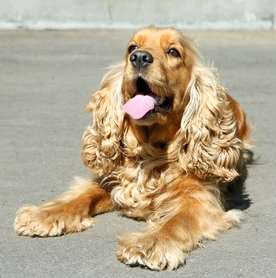
The English Cocker Spaniel is an affectionate dog with a tail that never seems to stop wagging. They are known for their gentle personalities and work ethic, and always at their happiest when they are by the side of their special person. Their size, although larger than the American Cocker Spaniel, makes them fit in almost any environment, so they can be apartment dogs as well.
English Pointer
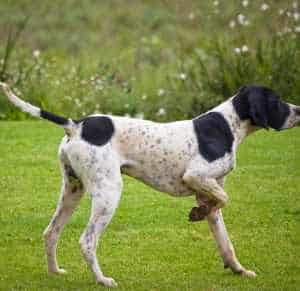
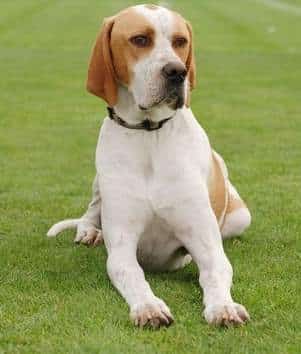
The Pointer takes its name from the stance it adopts when it detects the scent of game, “pointing” at the hidden game as a visible signal to the hunter that it has found something and where it is; the breed is sometimes called the English Pointer to differentiate it from other pointing dog breeds.
The term “bird dog” is usually used to describe all pointing dogs and setters, but in the United States the term is often used to describe the Pointer breed, particularly south of the Mason-Dixon line.
English Setter – one of many British Dog Breeds
English Setter
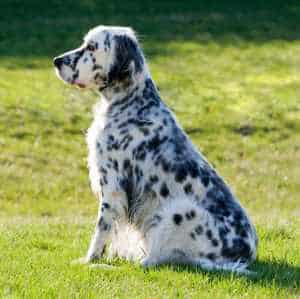
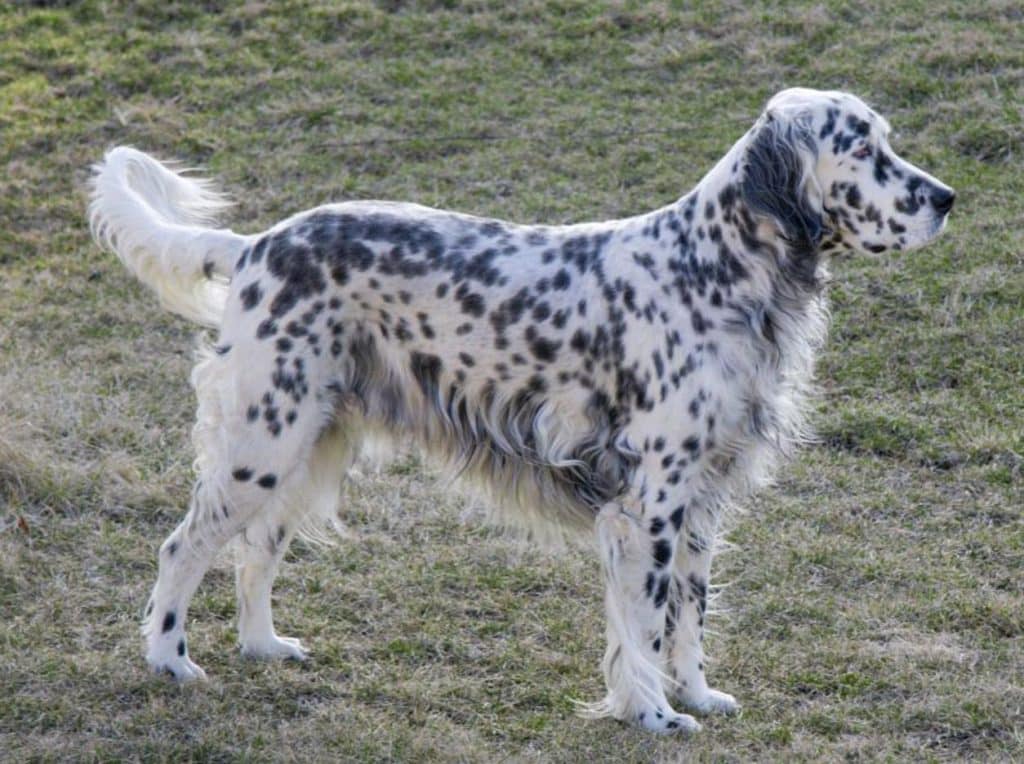
A friendly and energetic breed, the English Setter is sensitive and intelligent, with a playful nature. They are medium-size dogs, and get on well in a family, with children and with other dogs.
Originally bred to “set” of flush out game birds, they were taught to lie down, pointing at the area where the birds were. The hunter could the throw a net over the birds, and sometimes the dog too!
After the advent of the shotgun, the breed had to become “steady to shot” ie. not alarmed by the loud bang of the gun. They were also then taught to standup when setting, so that the hunter could see the dog more easily when at a distance from the game.
English Springer Spaniel
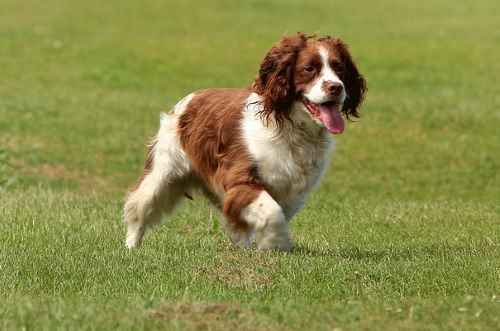
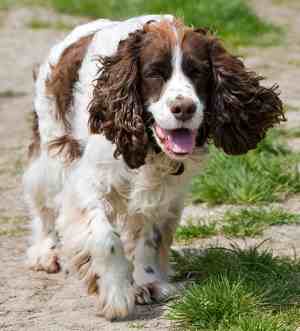
This a friendly, happy British Dog breed that was originally bred to flush out game (birds) from bushes and grassland. It was very important that the dog did NOT chase the game nor attack. This has resulted in a very restrained breed that nevertheless can be very excitable. They are extremely sociable, and will approach strangers with a wagging tail.
The breed emerged in its present form towards the end of the 18th century, when breeders agreed to separate smaller less heavy spaniels from their heavier, more athletic cousins.
The smaller spaniels were good at flushing out small birds like Woodcock, and so they came to be called Cocker spaniels. The larger, heavier spaniels were referred to as Field or English spaniels.
Field Spaniel
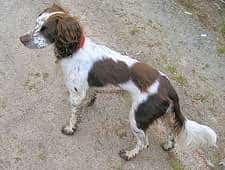
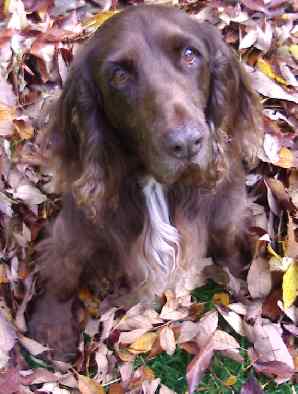
Field Spaniel
According to the AKC, “Field Spaniels bear a family resemblance to Cocker, Springer, and Sussex spaniels. The distinctive glossy coat is either black, some shade of liver, or combinations of the two. They stand 17 or 18 inches at the shoulder and should present the picture of well-balanced, moderately proportioned hunting companions.
The long, feathery ears frame a facial expression conveying a grave, gentle intelligence. Field Spaniels are sweet, sensitive souls with just enough independence to make life interesting. They are trustworthy with kids, tolerant of their fellow dogs, and responsive to training. The U.S. breed standard calls these tranquil house dogs ‘unusually docile,’ but they are nonetheless playful and enjoy a good backyard romp.”
Flat Coated Retriever
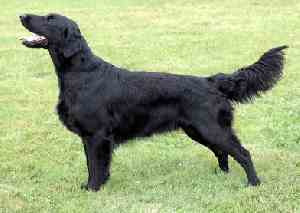
Flat Coated Retriever
The Flat-Coated Retriever’s eponymous flat-lying coat comes in lustrous black or liver, with feathering at the legs and tail. A distinctive breed hallmark is the long head – unique among retrievers – which projects a smart and kindly expression.
A Flat will stand as tall as a Labrador, but in silhouette they present a leaner, more elegant look. They are champion tail-waggers. Flats are among the happiest of all breeds. They mature slowly; some owners say that they never grow up at all, retaining a puppy taste for mischief into old age.
French Bulldog

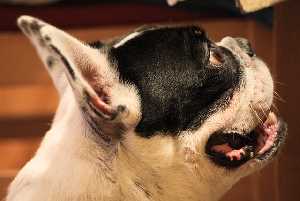
This breed is over 100 years old. Its modern-day form was achieved in the early 20th century. The breed was developed as a companion dog, using miniature English Bulldogs that British workers took to France in the middle of the 19th century. Here, through breeding with other local dogs, the English Bulldogs evolved into the French Bulldog we know today.
Golden Retriever


The Golden is an intelligent dog and can be trained to work with people on many levels. Their intelligence makes them easy to train and their loyalty just comes naturally.They are often crossed with Labrador retrievers for Guide Dogs for the blind, especially in the U.K.
Being as intelligent as they are, these dogs be easily taught tricks, and they are often seen on the show circuit. Goldens do well in field trials, hunting, obedience, and of course, conformation. They are being used more and more as guide and therapy dogs.
Jack Russell Terrier

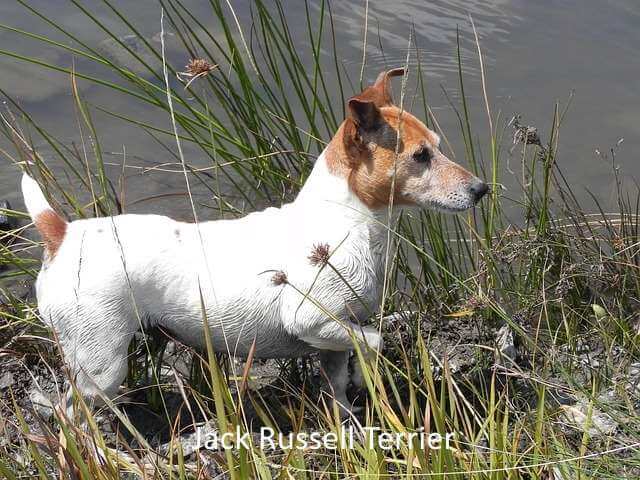
The Jack Russell is a supremely brave and confident breed, alert and vigilant, and also incredibly agile. They have a seemingly never-ending energy supply, and need a lot of exercise each day.
This is not a breed for inexperienced or first-time dog owners. They need firm but fair handing from the first day, to ensure they know who is in charge! Once socialized and trained, they make loyal and close companions.
Labrador Retriever
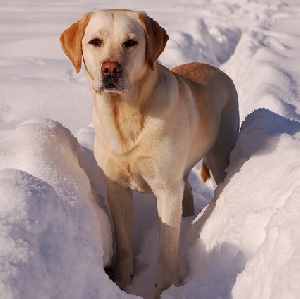
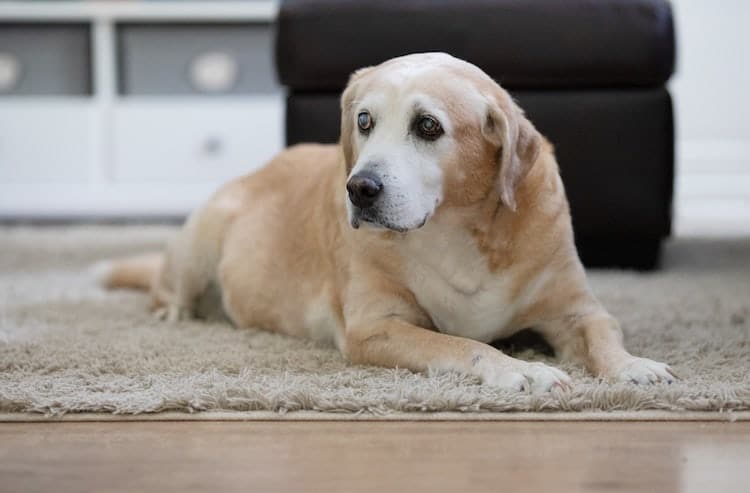
The origins of this breed lie in the province of Labrador in Canada. But the modern version we know today was the result of a breeding program in England, after the original Labradors were brought to the United Kingdom in the 19th century. The breeds used include the Newfoundland of Saint John and the English Pointer.
Lakeland Terrier
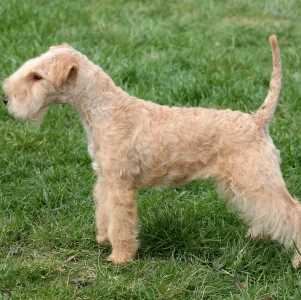

Lakeland Terrier
The result of cross breeding the old English Black and Tan Terrier and the Bedlington Terrier. Through varied selections, the modern breed we know today was obtained in the Lake District area of England, from where the breed gets its name. This dog was used for hunting fox. It is little known outside England and Ireland.
Lurcher

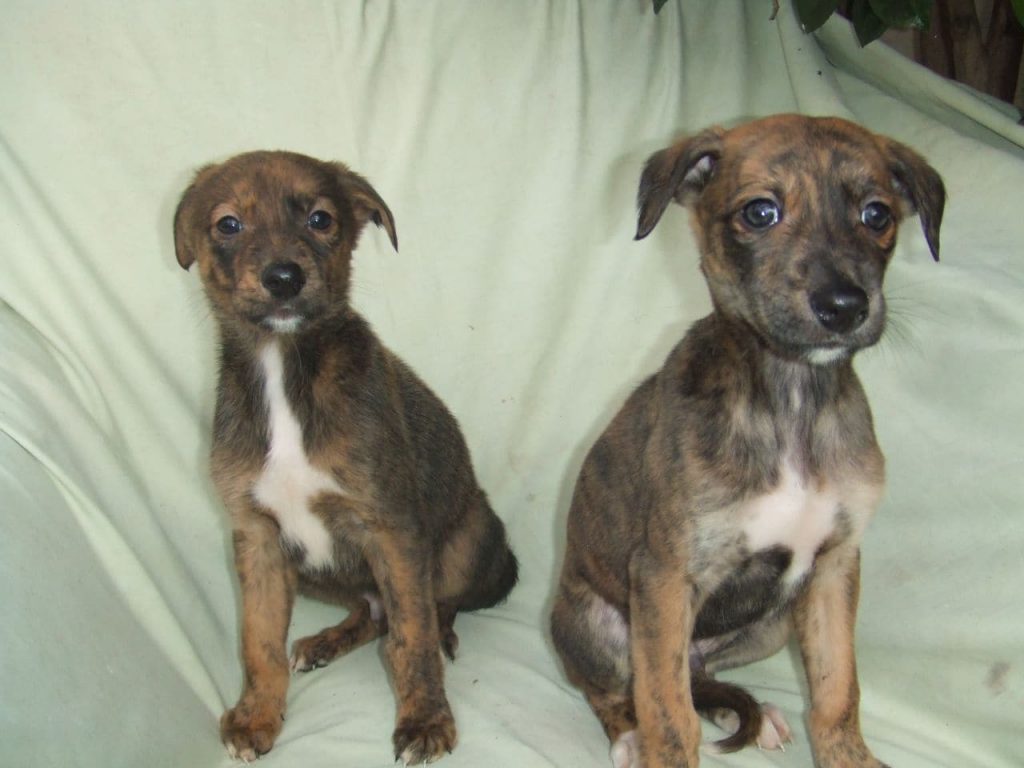
The Lurcher is a hybrid dog breed, where a sight hound (usually a Greyhound) is crossed with any other breed. This means there is a big range of appearance and temperament. However, they are almost always fast and energetic, and love to curl up into a warm corner to doze for a few hours! They generally make excellent family pets.
One of the most common Lurcher breeds involves a cross between a Greyhound and an Irish Wolfhound. This results in a rather shaggy-looking dog, but with a dignified and placid nature. However, this mix-breed is very likely to take off after just about anything that moves!
Manchester Terrier
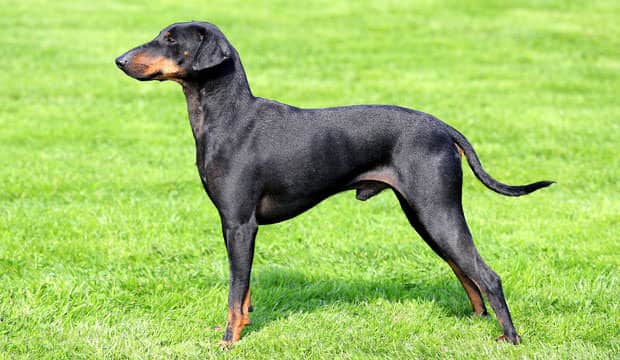
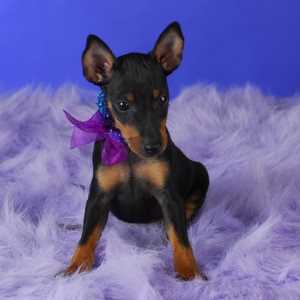
The Toy Manchester Terrier (MT) was once an excellent ratter, ridding the Manchester part of England of all its vermin. Nowadays, this breed has all but retired from that role and now enjoys the life of a real canine companion. He is alert and often wary of strangers — two traits that make them excellent watchdogs.
Being a terrier, these dogs are likely to be diggers, talkers, chasers and possessive of their belongings. Most terrier breeds have these inborn characteristics – “hunting tendencies” to one extent or another.
Norfolk Terrier
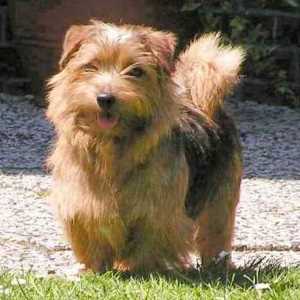
Norfolk Terrier
This breed looks very much like the Norwich Terrier, the main difference is the ears. They were recognized as different breeds in 1964. It is one of the smallest working terriers and was raised to hunt rats and foxes.
Norwich Terrier

Norwich Terrier
Related to the Norfolk Terrier, it differs from it only in its ears and was accepted as a separate breed in 1964. It seems to descend from the Red Irish Terrier, the breeder’s goal being to obtain a small, strong and brave dog like the Norwich Terrier.
Olde English Bulldogge
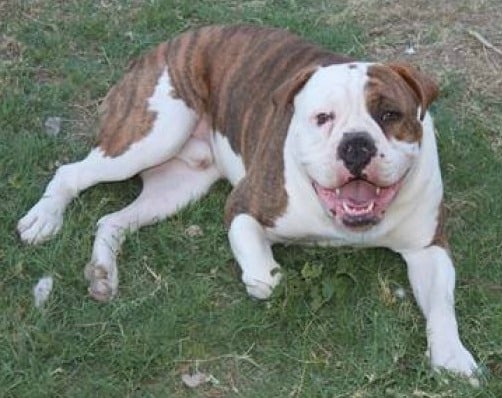

A modern breed, aimed at producing a calm and placid version of the original Old English Bulldog. This calm, docile bulldog is one of the most popular British Dog Breeds in countries all around the world. They are mellow and laid-back, taking life easy. They will warn you of intruders, but do not offer much by way of protection.
With their very short nose, they do not breath well, and so do not like hot weather nor extended exercise – they simply get out of breath and shut down. A loveable, low energy dog breed.
They were bred originally to “bait” a bull, clamping its teeth onto the bull’s nose for long enough to allow a butcher to kill the bull. This was outlawed in 1835. The breed was therefore very aggressive and ferocious at first, but after bull baiting was outlawed the bulldog was “bred down” in several directions.
One direction involved mixing in terrier breeds to make better fighting dogs, to supply the new (and illegal) sport of dog-fighting. The other direction – the Old English Bulldog – was bred to be smaller and much less aggressive; even docile!
Old English Sheep Dog
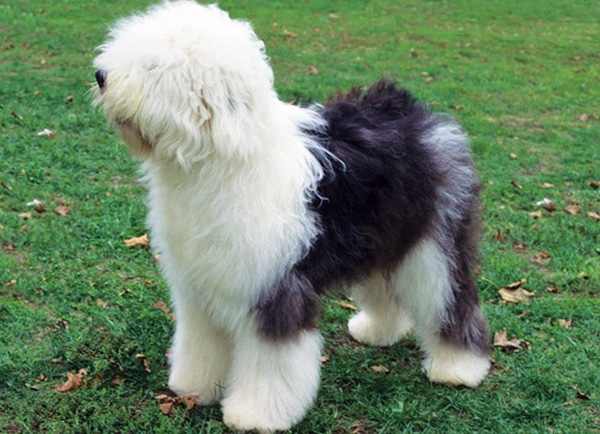
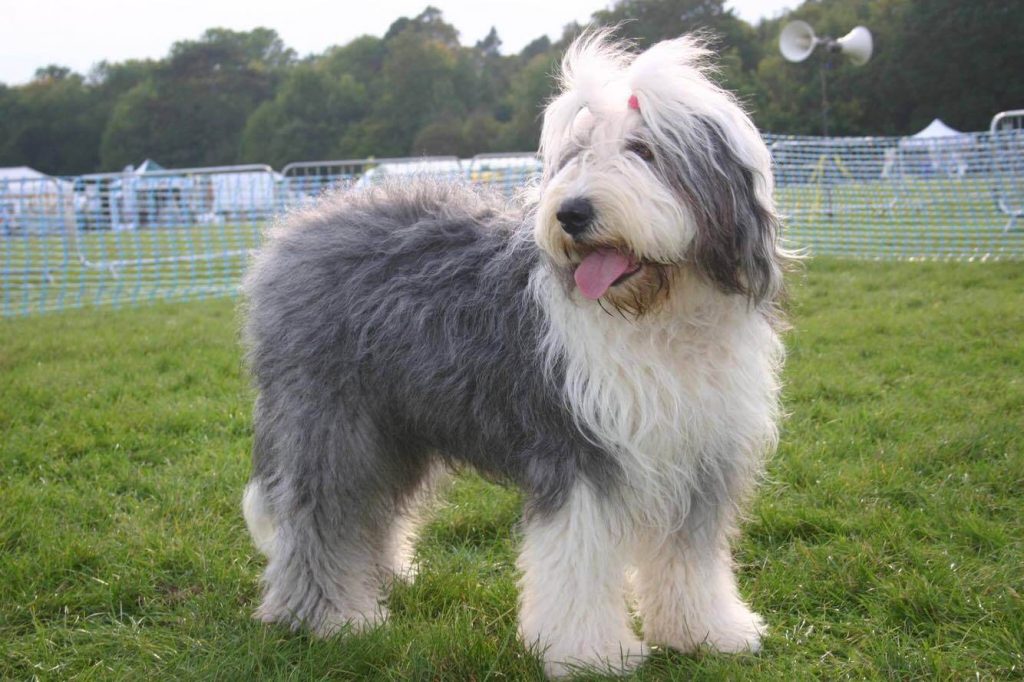
Originally bred to drive sheep and cattle to market, the Old English Sheep Dog is intelligent and kind, with a sense of humor. Widely known in the U.K. as ‘the Dulux Dog’ owing to an Old English Sheepdog featuring in the Dulux paint company’s television advertisements.
The Old English Sheepdog is gentle with children, and makes the perfect family pet. They love the attention that children give them, and enjoy playing with them. This breed does well in an apartment setting as well as in the city or out in the countryside.
Parson Russell Terrier
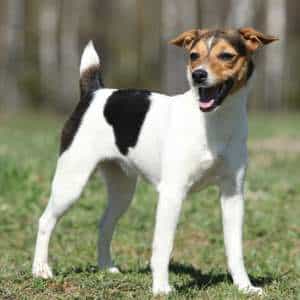
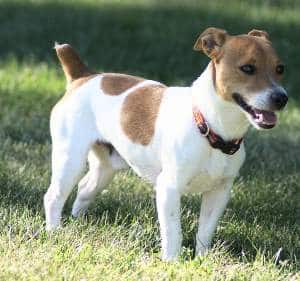
Parson Russell Terrier
Its name comes from the founder of this breed, the Rev. John Russell, who raised these Terriers for hunting foxes in the second half of the Nineteeth century. The dogs today resemble with the ones raised by John Russell, except they are taller by AKC standards. UKC also recognizes the Russell Terrier, which is a shorter, stockier dog.
Pembroke Welsh Corgi


The favorite breed of the Queen of England, the Welsh Corgi is a feisty dog. It’s origins are shrouded in the mists of time, but everyone agrees it all started in Wales in the United Kingdom.
They were used to help with sheep and cattle, and also as a wildfowler’s dog. It’s role gradually changed to guard of the farmyard, protecting and gathering flocks of geese and other farmyard fowl.
Scottish Deerhound
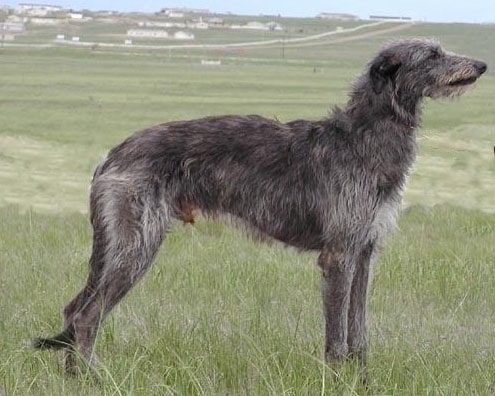

This is a very old sight hound from Scotland, but it was only called the Scottish Deerhound from the start of the 19th century, to distinguish it from the Highlands Greyhound and other Staghounds that were used for hunting at the time,
This breed is athletic and fast, bred to chase and hunt down the big Red Deer in the Scottish Highlands in bad weather and rough terrain. Since the end of the 19th century, the Deerhound has been replaced in the field by smaller, slower scent hounds, and the Deerhound has become more a family dog and a breed for the show ring.
In the home, they are friendly, docile and laid back. After a good fast run for an hour, they will love to stretch out in a comfy spot and snooze away the afternoon. They are good with children, although may be clumsy around them.
Scottish Terrier
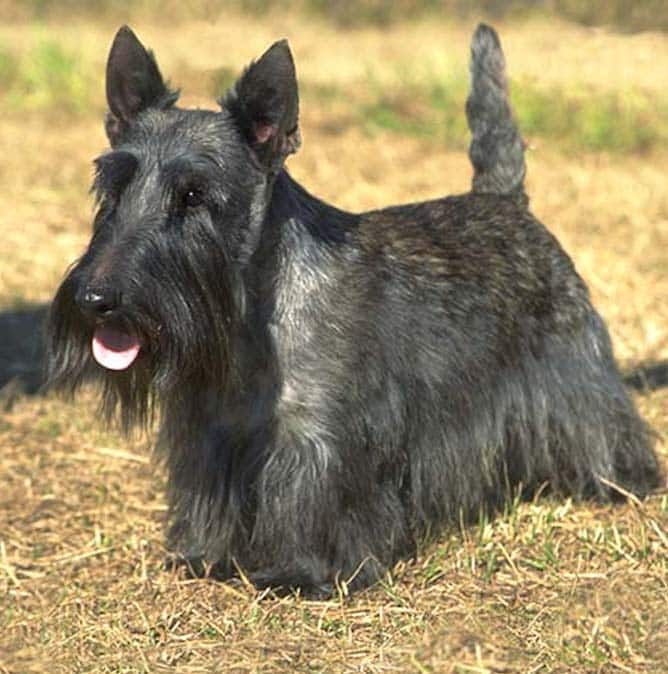
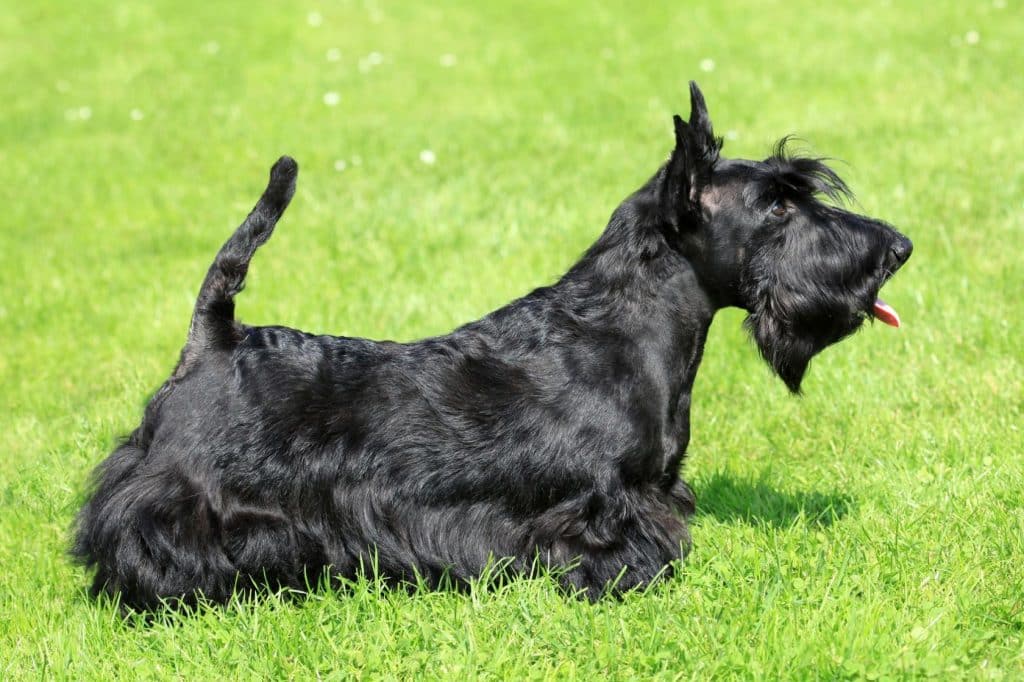
The Scottie is one of the 5 terrier breeds from Scotland. Very brave and tenacious, they will outlast you in any game of tug-of-war! An independent streak means they are not the easiest breed to train, but they are immensely loyal, and make good watchdogs.
Sealyham Terrier
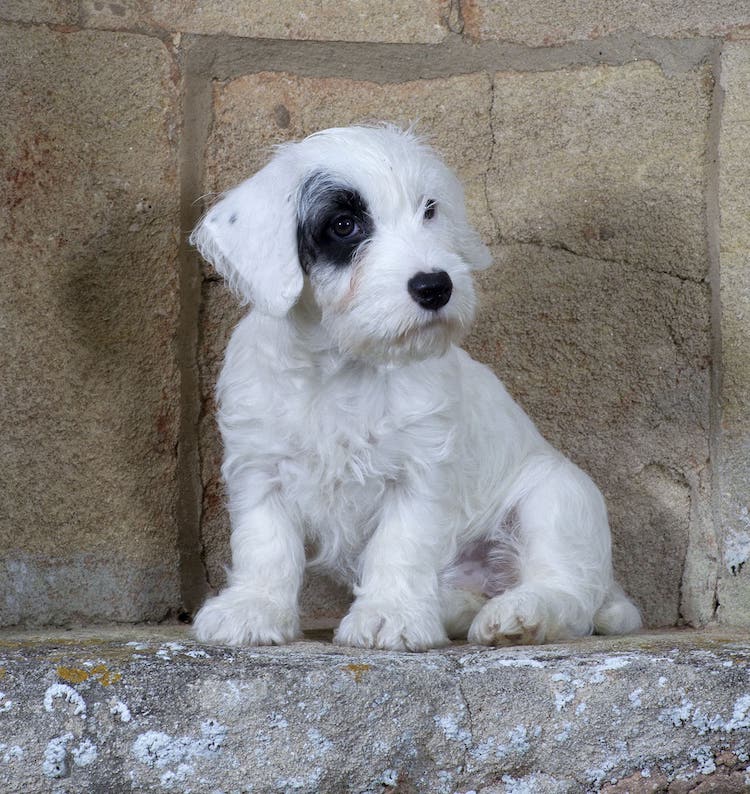
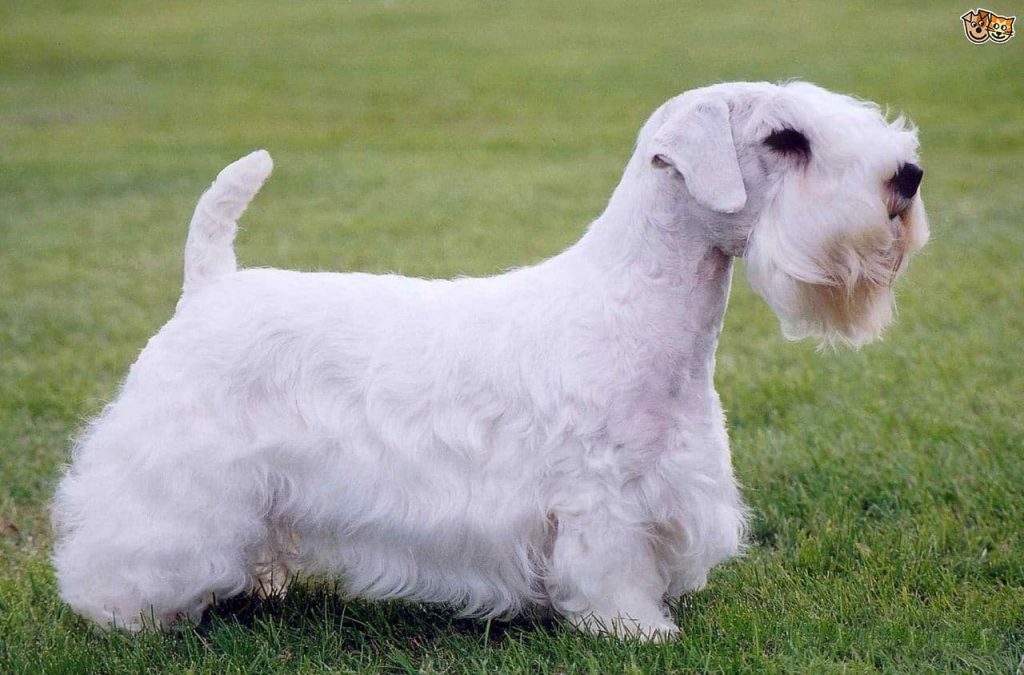
The Sealyham Terrier originates from Wales in the U.K.. This energetic and quirky terrier has an independent nature, and can be challenging to train. They were bred to catch vermin such as mice and rats, from around 1850. Unfortunately they are now quite rare, and are on the endangered native dog list of the U.K. Kennel Club.
Like most Terriers, they are alert and vigilant, and make good watchdogs. They also make good family dogs, but are better suited to older children.
Shetland Sheepdog
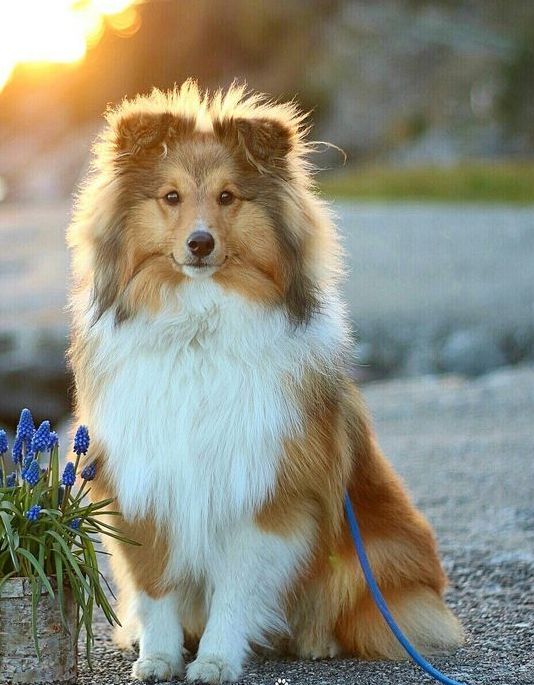
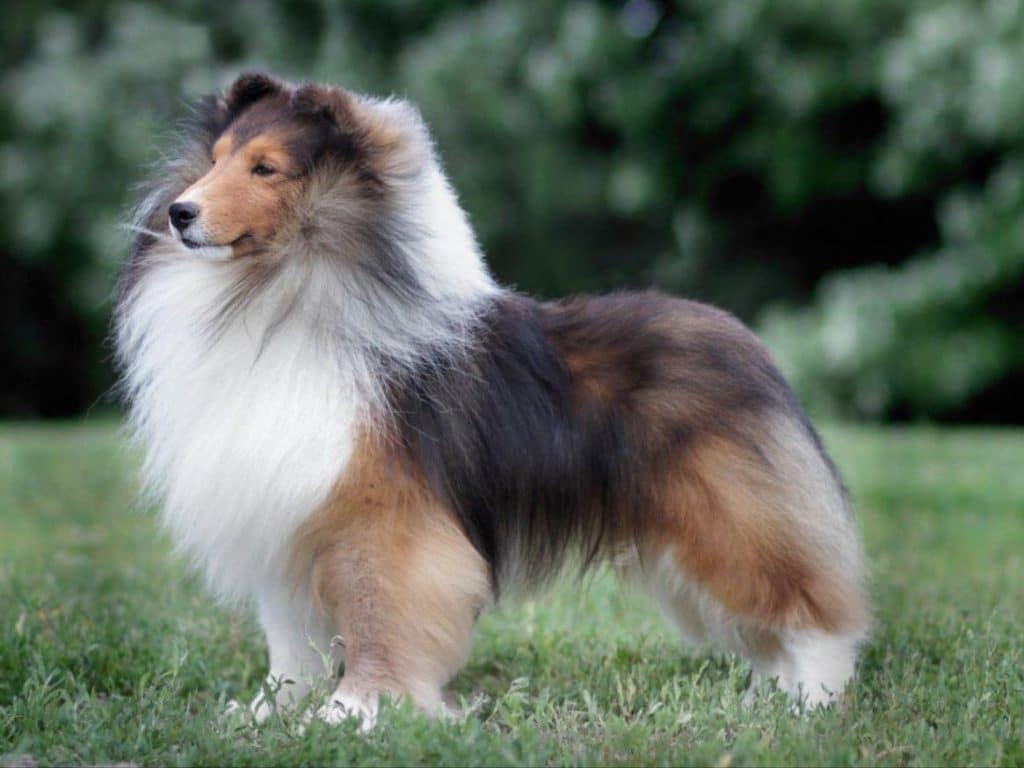
The ‘Sheltie’ is loving and affectionate, and looks like a miniature Rough Collie. They are intelligent and smart, and easily trained. They are cautious with strangers, and quite vocal – they will bark at anything!
Staffordshire Bull Terrier
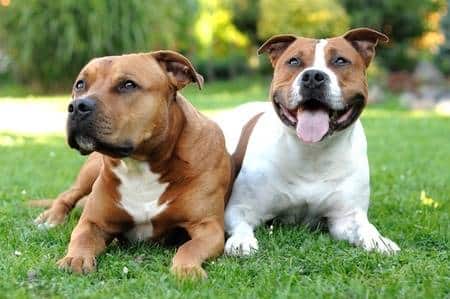
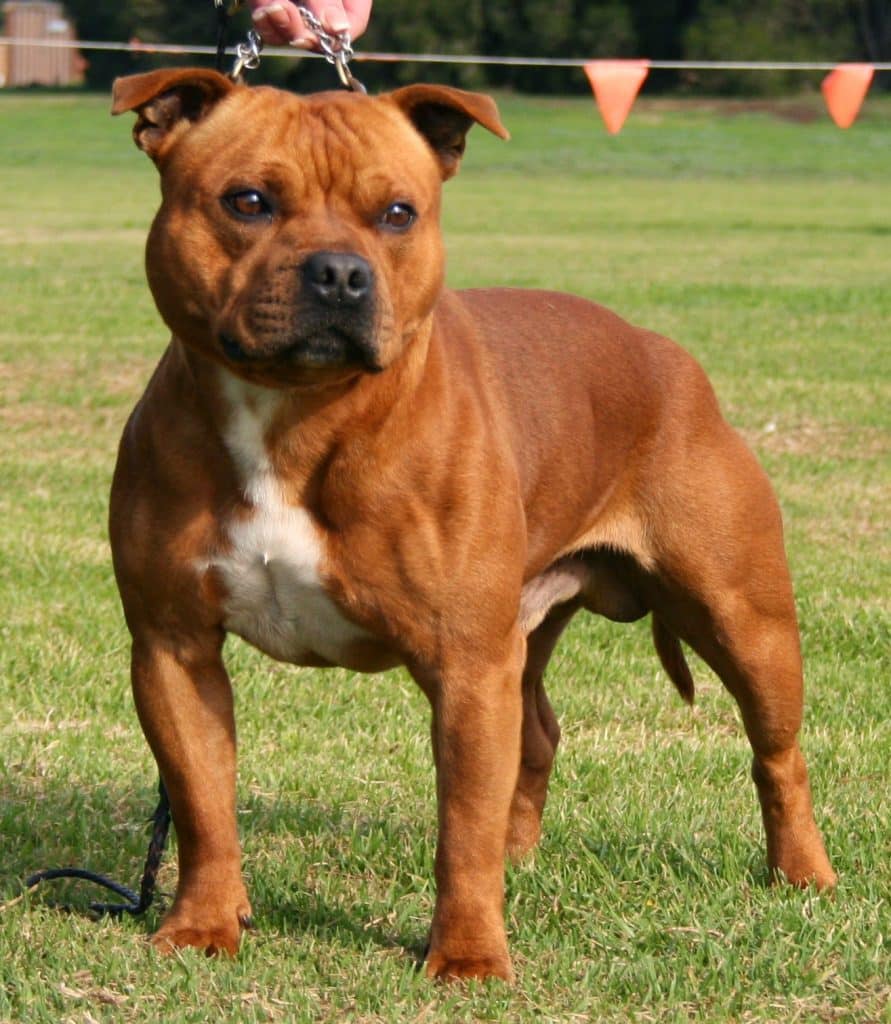
These dogs are the result of the outlawing of bull-baiting in the 1880s in England.
Breeders started mixing the larger, heavier Bulldog with Terrier breeds to increase their aggressiveness and fighting abilities. Other breeders went the other way, breeding for smaller, more docile dogs, ending up with the Olde English Bulldogge.
Meanwhile, the Bull and Terrier dog breeds were used initially for catching rats in a pit in staged competitions with illegal betting. Eventually 2 breeds arose, the Bull Terriers and the Staffordshire Terriers, which eventually became known as the Staffordshire
Sussex Spaniel

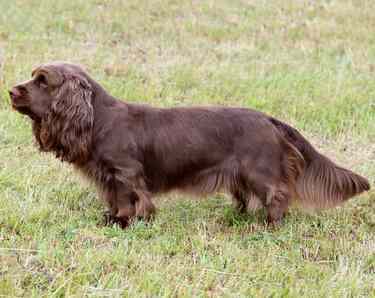
As its name implies, the Sussex Spaniel was originally bred in the county of Sussex, England. Like all spaniels, it was intended to flush out birds and game without chasing them. The heavy clay soils and thick undergrowth of the region demanded a powerful dog, and the Sussex Spaniel is deep-chested and muscular, with relatively short legs.
Of all the spaniels, these are probably one of the calmest when indoors. Outdoors, they get excited and bark more than most spaniels, and so were not commonly used by hunters. BUT indoors they are calm, quiet and mellow.
West Highland White Terrier
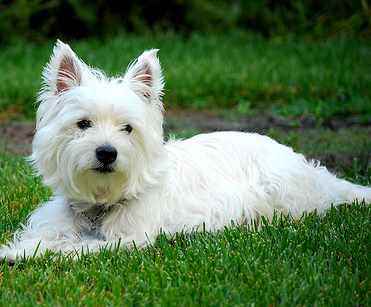

West Highland White Terrier (“Westie”)
The “Westie” is a small white terrier from the Western Isles of Scotland. Alert, independent yet friendly, the Westie is a rascal!
All the short-legged terriers being bred in Scotland in the 1800’s were used to hunt small game. They could have various coat colors. In a hunting accident, a red dog belonging to Colonel Edward Donald Malcolm of Poltalloch was mistaken for a fox and shot.
The Colonel decided to breed only white terriers in future, to avoid the same mistake being made again. They were originally called Poltalloch terriers, but the Colonel was uncomfortable with having his name associated with the breed, and requested a name change.
The breed was then known as the Rosenearth Terrier, until it was first recognized by the American Kennel Club in 1908, and subsequently re-named as the West Highland White Terrier in 1909.
Whippet
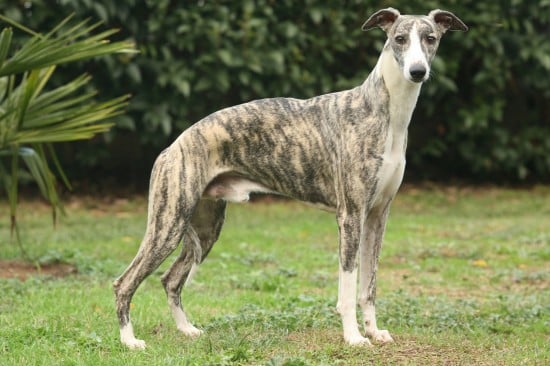

The Whippet originated in the North of England in the 1800’s, when miners wanted a dog for hunting and racing that was smaller than the Greyhound, which took up too much space and ate too much food. They bred what we now call the Whippet, which is around half the size of an adult Greyhound.
This breed is calm, amiable and friendly, and well-suited to living in a family with children and also in an apartment. They are very fast when outdoors, achieving up to 35mph, but are couch potatoes when at home, curling up into a small ball for a few hours snooze.
Yorkshire Terrier

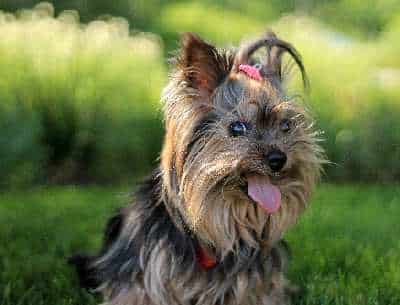
The Yorkshire Terrier we know today is a mixture of 4 to 5 other terrier breeds. The Skye, Clydesdale and Paisley terriers were brought from Scotland to England by Scottish mill workers seeking work during the industrial revolution. They were fierce and good at keeping rats and other rodents out of homes and shops.
They proved to be good at keeping rats out of the woolen mills, too, and breeders started breeding smaller terriers, to be more agile. In the 1870s people began referring to these new terriers as “Yorkshire Terriers”.
In 1873 the Yorkie was one of the first British dog breeds to be recognized by the new English Kennel Club.
We hope you enjoyed our guide to British dog breeds. Please let us know if think we have missed one out!



